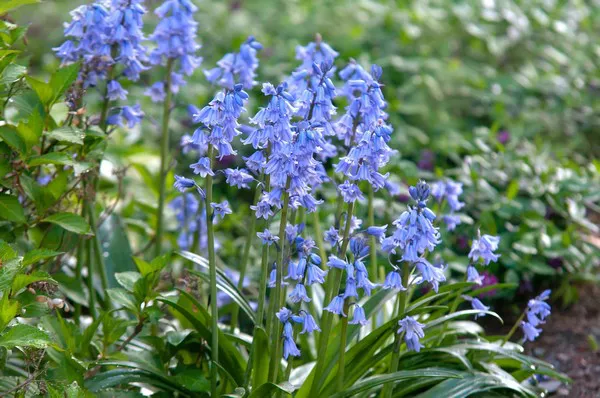Kale, a versatile leafy green vegetable, has gained immense popularity in recent years for its nutritional value and culinary versatility. While most people are familiar with its vibrant green leaves, many are unaware of the kale plant’s hidden gem – its flowers. In this article, we will explore the intriguing world of kale flowers, their appearance, significance, shedding light on their unique characteristics and uses.
The Kale Plant: An Overview
Before delving into the kale flowers, let’s understand the kale plant itself. Kale, scientifically known as Brassica oleracea var. acephala, is a member of the Brassicaceae family, which includes other well-known vegetables like broccoli, cauliflower, and cabbage. Kale is known for its cold-hardiness and ability to thrive in various climates, making it a popular choice for home gardeners and commercial growers alike.
1. Kale’s Lush Foliage
Kale’s signature feature is its lush and textured foliage. The leaves vary in color from deep green to vibrant purple, with curly, frilly, or smooth edges, depending on the variety. This distinctive leafy structure makes kale not only a visually appealing plant in the garden but also a nutritious addition to our diets.
2. The Kale Flower: A Hidden Treasure
Kale flowers, often overlooked in favor of the leaves, have their own unique charm. These flowers emerge from the center of the kale plant, also known as the growing point or terminal bud. Their appearance is a testament to the kale plant’s ability to transition from a leafy vegetative stage to a reproductive one.
3. Appearance of Kale Flowers
Kale flowers typically have a cluster or rosette-like appearance. They form a tight bunch of small yellow or pale yellow blossoms with four petals each. These blossoms are arranged in a dense, globe-shaped inflorescence, resembling a miniature bouquet. The vibrant yellow contrasts beautifully with the dark green leaves, creating an eye-catching display in the garden.
4. Kale Flower Varieties
While most kale flowers share common characteristics, variations exist among different kale varieties. Some kale cultivars produce flowers with slightly different shades of yellow, ranging from creamy to bright lemon hues. The size of the flower cluster can also vary, with some varieties forming larger and more intricate blooms than others.
The Role of Kale Flowers
Understanding the purpose of kale flowers sheds light on their significance in the plant’s life cycle.
1. Pollination
Kale flowers play a crucial role in the reproductive process of the kale plant. Like many other flowering plants, kale relies on pollinators, such as bees and butterflies, to transfer pollen from one flower to another. This process enables the plant to produce seeds, ensuring its survival and propagation.
2. Seed Production
The blossoms on a kale plant eventually give rise to seed pods. These pods contain the seeds that are essential for growing new kale plants in the next growing season. Kale flowers are therefore instrumental in the production of kale seeds, allowing the plant to reproduce and continue its life cycle.
Edible or Ornamental: The Use of Kale Flowers
Kale flowers have caught the attention of chefs, home gardeners, and floral enthusiasts alike. Their dual nature as both edible and ornamental makes them a versatile addition to gardens and kitchens.
1. Culinary Uses
Kale flowers are not only visually appealing but also edible. They possess a mild, slightly sweet flavor, making them a delightful addition to salads, garnishes, and even stir-fries. Their delicate taste and vibrant color make them a gourmet ingredient that can elevate the presentation and flavor of various dishes.
2. Ornamental Value
Beyond their culinary use, kale flowers are prized for their ornamental value. Gardeners often grow kale not just for its leaves but also for its striking flowers, which can add a pop of color and texture to gardens and landscapes. The contrast between the yellow blossoms and the dark green leaves creates a visually captivating display.
Kale Flowers Beyond the Garden
Kale flowers have also found their way into various cultural and symbolic contexts.
1. Cultural Significance
In some cultures, kale flowers hold symbolic importance. They may be used in traditional rituals, celebrations, or ceremonies, signifying growth, renewal, or abundance.
2. Environmental Significance
Kale, including its flowers, contributes to biodiversity by attracting pollinators to the garden. Supporting pollinators helps maintain healthy ecosystems and supports the production of other crops that rely on pollination.
Conclusion
Kale flowers, often overshadowed by the popularity of kale leaves, offer a unique blend of visual appeal, culinary potential, and ecological significance. These vibrant yellow blossoms, nestled amid the rich green foliage, showcase the plant’s transition from vegetative growth to reproduction. Whether used as an edible delicacy or as an ornamental addition to your garden, kale flowers are a testament to the remarkable diversity and versatility of this remarkable vegetable. So, the next time you encounter a kale plant, take a moment to appreciate not just its leaves but also its hidden treasure – the kale flower.


